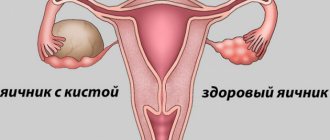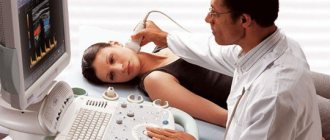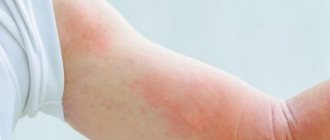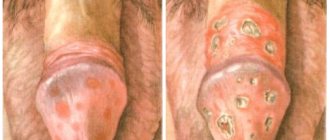All iLive content is reviewed by medical experts to ensure it is as accurate and factual as possible.
We have strict sourcing guidelines and only link to reputable sites, academic research institutions and, where possible, proven medical studies. Please note that the numbers in parentheses ([1], [2], etc.) are clickable links to such studies.
If you believe that any of our content is inaccurate, out of date, or otherwise questionable, please select it and press Ctrl + Enter.
Mastodynia in medical science refers to pain in the mammary glands, which can be felt in one breast or be palpable on both sides. Mastodynia can act not only as a symptom of other diseases, but also be classified as an independent diagnosis - in the case of psychogenic mastodynia. Many women face the problem of painful sensations in the breasts during puberty and, mainly, after 25 years. In view of the danger that mastodynia may portend, you first need to determine the causes of pain.
[1], [2]
Causes of mastodynia
The most common cause of mastodynia is premenstrual syndrome in women - the pathological course of the last phase of the cycle. The occurrence of mastodynia is explained by an increase in the amount of estrogens in this phase, which affects the intensification of proliferative processes in the mammary glands. Swelling and pain occur in the chest area, which stops with the onset of menstruation.
Mastodynia may also be the first and most pronounced sign of benign mammary dysplasia.
The occurrence of cyclical pain and enlargement of the mammary glands is observed in most women during the “period of adaptation” to oral contraceptives - the first months of taking the drugs.
In addition, the appearance of mastodynia can be caused by:
- pregnancy;
- reactive sclerosis of the connective tissue of the mammary glands;
- inflammation of the osteochondral joints of the spine;
- intercostal neuralgia;
- the presence of a malignant tumor;
- consequences of trauma to the mammary glands (for example, during plastic surgery);
- dysfunction of the liver or kidneys, affecting the hormonal state of the woman’s body;
- hormonal imbalance after an abortion, failure of the first pregnancy is especially dangerous;
- stress, neurosis.
For effective treatment of mastodynia, the correct determination of the cause in each individual case plays an important role.
[3], [4], [5], [6], [7], [8], [9], [10]
Causes
There are certain risk factors for the development of this pathology, these include:
- Heredity. The presence of this pathology in close relatives on the female side.
- Endocrine pathology. Diabetes of the first and second types, obesity, and thyroid disease increase the risk of developing mastopathy.
- Stress. Depression, overstrain at work, and irregular sex life lead to hormonal imbalance and the formation of cystic fibrosis.
- Obstetric history. Late first pregnancy, short period of breastfeeding, abortion, late menarche also affect the activation of non-inflammatory diseases.
The development of the disease has the following etiological factors:
- Disturbance in the hypothalamic-pituitary system. This promotes the activation of proliferative processes in hormonally dependent organs.
- Changes in the menstrual cycle. With an anovulatory and incomplete ovulatory cycle, the level of female hormones increases significantly, which directly affects the structure of the mammary gland.
- Liver pathology. Estrogen is destroyed in this organ. If its functioning is disrupted, hormones accumulate in the blood, activating proliferative processes in the breast.
- Hypovitaminosis. Many vitamins are involved in the processing of hormones, and their deficiency reduces the activity of liver enzymes.
Symptoms of mastodynia
In addition to chest pain, mastodynia is characterized by swelling, a feeling of tension in the mammary glands, increased sensitivity to the touch of the nipple and breast tissue, and a feeling of heat. All these symptoms can be traced in the cyclic form of mastodynia, while the non-cyclic form is not characterized by swelling and the appearance of breast sensitivity. This form is characterized by the local nature of the painful sensations, the pain is weak or sharp, lasts constantly or occurs without any frequency. The patient may have discharge from the nipple: clear or yellow.
When observing the latter, a woman should sound the alarm and be sure to see a mammologist, because these symptoms may accompany inflammation or the appearance of tumors. So, there are two forms of mastodynia: cyclic and non-cyclic - not associated with the menstrual cycle and, mainly, indicating the presence of other diseases.
Cyclic mastodynia reflects the cyclical functioning of the ovaries and the effect of sex hormones on the mammary glands. It can be defined by a doctor as a separate diagnosis - “psychogenic mastodynia”, but only if there are no changes in the structure of the mammary gland.
Cyclic mastodynia can be:
- a symptom of premenstrual syndrome;
- an independent symptom in the absence of other manifestations of PMS;
- a symptom indicating the presence of mastopathy;
- consequences of the use of hormonal drugs.
Forecast
The prognosis of cyclic mastodynia with timely consultation with a doctor is favorable
. By adjusting your lifestyle and taking medications, you can normalize the menstrual cycle and the condition of the gland. The prognosis for inflammatory diseases and neoplasms, as well as for mastopathy, depends on the timeliness and adequacy of the prescribed treatment.
Found a mistake? Select it and press Ctrl + Enter
Useful article All about galactorrhea
Galactorrhea is the spontaneous leakage of breast milk or its derivatives from the mammary glands, not associated with feeding the child, the gender of the patient...
Read the full article
Diagnosis of mastodynia
The examination of a woman complaining of mastodynia begins with examination and palpation of the mammary glands. Diagnosis is carried out after the cessation of menstruation. To find out the hormonal cause of pain, a blood test is performed that will show the level of sex hormones. Women over 40 years old are necessarily referred by a mammologist for mammography and ultrasound, and those under 40 are referred only for ultrasound, as a rule. If the result of these studies indicates the presence of neoplasms, the patient will also need to undergo a biopsy procedure.
[11], [12], [13], [14], [15]
Treatment of mastodynia
Treatment of mastodynia is aimed at eliminating painful sensations in the mammary glands. The doctor and patient are often faced with the question: treat only the symptoms of mastodynia, or try to find out its causes in a particular patient, and choose treatment methods based on them.
Women complaining of mastodynia are usually recommended:
- Avoid consuming products containing caffeine, as they affect the development of fibrous tissue. These include coffee, tea, chocolate, cocoa and Coca-Cola.
- Diversify your diet as much as possible with foods rich in fiber and vitamins A, C, E and B, but it is better to avoid fatty foods and alcohol. This helps normalize liver function and remove excess estrogen from the woman’s body.
- Choose the right bra: it must be of the appropriate shape, size, and, in no case, should not squeeze the breasts. For women with large breasts, wearing this piece of clothing is mandatory.
In addition, if mastodynia is caused by premenstrual syndrome, it is recommended to use diuretics, such as herbal teas and fresh pumpkin, a few days before the start of menstruation. This will prevent swelling. It is better to avoid table salt, but you can compensate for the lack of potassium and magnesium with the help of oatmeal and rosehip decoction.
Breast swelling with mastodynia can be caused by circulatory problems. To eliminate them, doctors also recommend the use of vitamin P preparations and foods rich in it - citrus fruits, rose hips, black currants and raspberries.
For a woman suffering from mastodynia, it is important to maintain peace of mind, because the mammary gland reacts very sensitively to changes in psycho-emotional states. To maintain calm in stressful situations, you can use mild sedatives such as tincture of motherwort or valerian.
Mastodynia caused by hormonal imbalance is treated with hormone therapy. It may include the following drugs:
- Antiestrogens that block estrogen receptors in the mammary glands, for example, Fareston. The effect is observed within the first month after the start of treatment. The drug is taken 20 mg from the fifth to the twenty-fifth day of the cycle (daily - if the cycle is irregular, during menopause).
- Oral contraception. Your doctor should help you choose the right remedy. He will take into account the patient’s age, the severity of symptoms and hormonal disorders, and will recommend a suitable drug.
- Progestogens that help reduce the effect of estrogens on breast tissue. A popular remedy is medroxyprogesterone acetate, as it has more pronounced gestagenic properties with virtually no androgenic effects. I would like to add that you can take hormonal therapy drugs only as prescribed by a doctor, because their selection should be based on the results of laboratory diagnostics and be optimal for a particular patient.
Treatment of mastodynia with folk remedies
A little has already been said above about non-drug methods of treating mastodynia. Let us dwell in more detail on folk remedies that help eliminate pain and swelling of the mammary glands.
In cases where the occurrence of pain is cyclical, several days before the expected appearance of symptoms of mastodynia, it is recommended to start taking products containing extract of common twig. This plant, popularly called “Abraham’s tree” or “wild pepper”, lowers prolactin levels, thereby helping to harmonize hormonal levels during PMS. You can find it in pharmacies. Drops or tablets containing the extract should be taken in accordance with the instructions in the instructions for them. It is worth noting that this method is contraindicated for women suffering from mastodynia during pregnancy or lactation.
Another effective folk remedy is herbal tea made from a mixture of St. John's wort leaves, dandelion roots, mantle and nettle leaves. The collection can be prepared independently from pre-dried plants, mixing them in equal proportions, or purchased ready-made at a pharmacy. To prepare it, you need to brew a teaspoon of the mixture in a cup of water and let it brew for ten minutes. Drink three times a day a few days before the onset of PMS.
Similar article - Alum in gynecology reviews
For mastodynia caused by pregnancy or lactation, you need to be especially careful in choosing traditional medicine. A safe method is a compress of mashed cabbage leaves. They need to be applied to the chest under a comfortable bra. As soon as the swelling subsides, it is better to stop compresses.
Some women suffering from mastodynia are helped by cottage cheese masks: low-fat cottage cheese is laid out in a half-centimeter layer on the chest and covered with a napkin made of natural fabric. If it’s a cold season outside, you should wrap your chest in woolen cloth.
When self-medicating with folk remedies, it is important to listen to the body’s reaction to them. Even if the measures taken turned out to be sufficient to relieve pain, do not forget to still tell them when you see your gynecologist.
According to statistics, more than half of women experience discomfort and pain in the mammary glands at least once in their lives. A third experience unpleasant symptoms with regularity every month. Mastodynia (mastalgia) is a term used to describe pain in the mammary glands. What causes the condition and should I worry?
A synonym for this concept is mastalgia. The ICD-10 code for mastodynia is N64.4, however, those conditions in which pain is associated with other diseases are excluded from this code. For example, with osteochondrosis or heart disease. Mastodynia may be a sign of the presence of a tumor in the mammary glands, so the symptom should not be ignored.
Effective treatments
The treatment regimen for the development of mastodynia depends on the cause of the discomfort. If the hormonal balance is disturbed, the level of regulators must be adjusted through diet and oral contraceptives.
You need to know: mastopathy, one of the symptoms of which is mastodynia, in most cases occurs due to hormonal imbalance. When progesterone concentrations stabilize and estrogen and prolactin levels decrease, painful manifestations decrease. If mastopathy develops, a woman should receive the drugs Mastodinon, Mammoleptin or Mamoklam, and treat her breasts with Progestogel gel.
If a malignant process is detected, surgical treatment, radiation and chemotherapy are prescribed. In each case, the mammologist selects an individual treatment regimen depending on the stage and size of the malignant tumor. If a woman goes to a medical facility at an early stage of breast cancer, breast-conserving surgery may be performed.
Basic rules for treating mastodynia:
- sharply limit the intake of products with high levels of caffeine: the component activates the formation of foci of fibrosis in the mammary glands. You should not consume chocolate, tea, all types of coffee, cocoa;
- choose a bra according to size from high-quality natural materials. It is important that the item of women’s toilet does not interfere with blood circulation or put pressure on the mammary glands;
- change your diet, give up items with preservatives, synthetic dyes, spicy, salty, fried and fatty foods;
- you cannot drink alcohol of any category;
- it is important to stabilize the liver to activate the removal of estrogen. It is useful to eat more vegetables, greens, fruits, foods with fiber, get flaxseed oil, low-fat fermented milk products;
- Rosehip decoction contains many vitamins. You need to get citrus fruits, oatmeal, brown rice, seafood, black currants;
- To reduce nervous excitability, it is useful to take herbal decoctions. A good sedative effect in the absence of negative effects on the body is provided by mint and lemon balm tea, a decoction of string, tincture of motherwort and valerian;
- to stabilize hormonal levels and activate metabolic processes, it is useful to drink a decoction of St. John's wort, nettle, dandelion root, mantle;
- for cyclic mastodynia, you can apply a slightly broken leaf of fresh cabbage to the painful area. The released juice reduces discomfort and swelling. A compress of cabbage leaves can be made for several days in a row until the swelling and pain disappear.
Find out about the symptoms of iodine deficiency in women, as well as how to compensate for the deficiency of the microelement.
The features of traditional treatment of diabetes mellitus in men and women are written on this page.
Follow the link https://vse-o-gormonah.com/hormones/progesteron/povysit-estestvennym-sposobom.html and read about the causes of low progesterone in women, as well as how to replenish the hormone deficiency in natural ways.
To eliminate hormonal imbalance, the following are prescribed:
- antiestrogens;
- gestagens;
- oral contraceptives.
READ ALSO: The first signs and symptoms of breast cancer: causes of the development of the malignant process, treatment of oncology and prognosis for recovery
In what cases is pain considered normal?
The mammary glands are an indicator of women's health. Changes in the functioning of internal organs instantly affect the structure and function of the breast. It is most closely connected with the thyroid gland and genitals.
Unnoticed by a woman, changes occur in the mammary glands every month: they prepare for the upcoming pregnancy (even if it is not planned), and react to fluctuations in hormones. Their tissues contain a large number of receptors (sensitive zones) for estrogens and progesterone.
Normally, minor pain is allowed during the following periods:
- ovulation;
- on the eve of menstruation;
- in adolescents during the formation of menstrual function;
- in postmenopausal women (often described as burning, discomfort).
About the connection with mastopathy
Mastopathy is a disease of the mammary glands, which is characterized by uneven growth of organ tissue with the formation of foci of fibrous compaction, cysts, and fibroadenomas. Mastopathy is a disease of modern women. Stress, decreased physical activity, excess weight, few births, and a short lactation period provoke the disease. Signs of mastopathy can be detected in every second girl with a thorough examination. Often this is a transient condition in gynecological diseases - inflammation of the appendages, an infectious process in the uterine cavity.
The following hormones influence the growth of breast tissue:
- estrogens - are responsible for the formation of new acini and ducts;
- gestagens - inhibit the action of estrogens and stimulate the differentiation of new tissues;
- prolactin - promotes enlargement of the mammary glands, the formation of new lobules, participates in the transformation of tissues to produce colostrum and milk;
- thyroid - regulate the functioning of the genital organs and mammary glands.
What is mastodynia and its causes
In 80% of cases, mastodynia is associated with manifestations of mastopathy; the following conditions can also cause pain.
- Injuries. You don't have to fall or get hit in the chest to do this. Wearing tight or ill-fitting underwear with a push-up effect compresses the tissue, causing local swelling and pain. This provokes the development of mastopathy. Pain occurs in any phase of the cycle and intensifies on the eve of and during menstruation.
- Tumors. Benign tumors and cancer at an early stage do not manifest themselves in any way. Pain occurs when tumors are large in size, in the case of metastases, or when adjacent tissues (muscles, bones) are involved in the process.
- Chest inflammation. Pain in the mammary glands during lactation primarily indicates stagnation of milk and possible mastitis. In this case, a lump is often detected; not the entire breast hurts, but locally. The skin over the area of stagnation becomes hyperemic, dilated blood vessels are visible, and an elevated temperature is detected by touch. Fever is a sign of active mastitis, which requires immediate consultation with a surgeon. Mastitis can occur outside of lactation, for example, with chronic infection in the mammary glands (usually actinomycetes, staphylococci, streptococci, E. coli, Proteus), with suppuration of a hematoma after injury. Treatment depends on the severity of the condition and clinical picture.
- Taking medications. Most often, pain in the mammary glands is a side effect of hormonal contraceptives, as well as medications that affect the cardiovascular system.
- Parasitic diseases. The bursting nature of the pain is characteristic of parasitic cysts, for example, with echinococcosis. The pathology is rare; CT or MRI helps in diagnosis.
- Diseases of related organs. Myalgia of the pectoral muscles, vertebrogenic syndrome (intercostal neuralgia), ischemia (impaired blood supply) of the heart myocardium can be disguised as chest pain.
Classification
Based on the nature and frequency of occurrence, the following forms of mastodynia are distinguished.
- Cyclic. The pain appears regularly with the onset of menstruation and goes away in the first days. In this case, fluid accumulates in the tissues of the mammary gland, squeezing the nerve endings and causing swelling, which contributes to the occurrence of pain impulses. Unpleasant symptoms are intensified by the influence of serotonin and histamine.
- Non-cyclical. Has no periodicity. Chest pain is more localized, appears at a certain point in one of the glands and does not depend on menstrual flow. Typical for mature ladies over 40 years old.
Main types of pathology
Pain syndrome in the mammary glands appears due to hormonal imbalance, when the excreted fluid is retained in the ducts, squeezing the nerve endings. Unpleasant sensations vary in intensity and character and can be observed in one breast or both at once.
Doctors distinguish between mastodynia:
- physiological (cyclical);
- pathological (non-cyclical).
In the first case, the discomfort in the chest is caused by hormonal changes during the menstrual cycle, pregnancy or puberty. Cyclic pain is typical for women under 40 years of age.
Breast tenderness is called mastodynia
Pathological conditions include conditions in which painful sensations in the mammary glands appear spontaneously and have varying degrees of intensity. Often this type of mastodynia occurs in women between 30 and 50 years of age and is a sign of concomitant diseases of the breast or neighboring organs.
For example, with mastopathy - a painful growth of the connective tissue of the mammary glands - breast swelling and discomfort are often observed.
Physiological pain decreases with the onset of menopause. If they were not cyclical, they may bother you even after menopause.
Pain in the mammary glands in women - video
Symptoms
Cyclic mastodynia is characterized by chest pain in the second phase of the menstrual period. It often accompanies mastopathy. Non-cyclical pain should be treated with more caution and, first of all, malignant neoplasms should be excluded. Comparative characteristics of both forms and women’s complaints are presented in the table.
Table - Symptoms of mastodynia
| Symptom | Cyclic | Non-cyclical |
| Nature of pain | Aching or pulling | Almost burning |
| Localization of pain | Diffuse nature | Has clear localization |
| Frequency of pain | On the eve of menstruation, less often - in the middle of the cycle | Constant or periodic |
| Breast enlargement and swelling | Yes | No |
| Unpleasant sensation when touched | Yes | No |
| Increased nipple sensitivity | Yes | No |
| Feeling of chest constriction | Maybe | Maybe |
| Additional symptoms | Pain under the armpit with an additional lobule | - Possible discharge from the nipple; - during inflammation, redness occurs over the lesion; - sometimes a symptom of “orange peel” |
Diagnostics
If cyclic mastodynia develops or chest pain appears, you need to consult a mammologist. If the development of discomfort was preceded by surgery or injury to the mammary glands, then you should not hesitate to visit a specialized specialist. If there is severe pain, purulent or bloody discharge from the nipple, fever, chills, or nausea, delaying a visit to the doctor can lead to dangerous consequences.
At the first appointment, the mammologist collects anamnesis, clarifies the nature of the complaints, and the frequency of occurrence of the pain syndrome. Next, the specialist conducts a thorough palpation of the mammary glands in all areas. In case of a severe pathological process or tumor development, lesions with an affected structure can be identified already at the first appointment.
The next stage is conducting instrumental research. Women under 35–40 years of age are prescribed an ultrasound of the mammary glands. After forty, the best option is to do a mammogram: the method allows you to clearly distinguish between age-related changes and the formation of pathological elements.
If cancer is suspected, an MRI will be needed to obtain high-precision thin-section images. When neoplasms are detected, a puncture biopsy of tissue from the problem area is performed.
How to make a diagnosis
If you experience chest pain, you should first analyze your condition. Remember physical activity, stress, medications and other factors that could change how you feel. Pregnancy should be excluded. To do this, you need to do a test or take a blood test for hCG. In order not to miss the onset of irreversible processes in the breast, it is recommended to conduct a monthly self-examination. It is difficult to establish the cause of mastodynia, but you can notice deviations from the norm in the shape and structure of the mammary glands, and detect tumor-like formations. In these cases, as well as if you have complaints of pain, you should consult a doctor.
Self-examination
Palpation should begin immediately after the end of menstruation or within 12 days after it. It is the first phase of the cycle that is most informative for diagnosing pathological processes in the breast. It is better to carry out the procedure in front of a mirror to check for:
- changes in the structure or color of the skin of the breast;
- the appearance of asymmetry;
- changes in the armpits (can be in a lying position).
Analyzes and instrumental studies
If you have complaints regarding the mammary glands, you should consult a mammologist. He will collect anamnesis, clarify concomitant diseases and will be able to suggest the cause of the disorders. The doctor will conduct a careful examination and palpation of the breast. For an accurate diagnosis, the following studies are prescribed:
- Ultrasound of the glands - for women under 45 years of age;
- mammography - for women during menopause;
- biopsy - if focal compactions are detected;
- blood on CA-15.3 is a tumor marker, increases in malignant breast diseases;
- consultation with specialists - if you suspect other diseases with “mirror” chest pain, it is especially important to “be healthy” in the gynecological part, since inflammation of the pelvic organs often causes reactive chest pain.
Symptoms and signs and how to detect it yourself
Women can detect clinical signs of pathology on their own. Symptoms that should alert you:
- Pain at the site of the tumor.
- Lump in breast tissue.
- Swelling in the affected area.
- Enlargement and hardening of the lymph nodes in the armpits.
- The appearance of discharge from the nipples. They are usually clear serous. They can also be colostrum-type, greenish, yellow, brown.
Mastopathy is characterized by increased clinical symptoms in the premenstrual period. It is also important that the signs of the disease do not disappear after the end of menstruation.
If you experience these symptoms, it is important to consult a doctor immediately. He will examine the site of the lesion, prescribe examination and treatment.
Treatment
Often, chest pain goes away on its own - when you stop taking hormonal medications, after the cycle normalizes, after childbirth and lactation, if they are associated with these reasons. To correct pain in both types of mastodynia, taking into account contraindications, medications (tablets, ointments, gels) presented in the table are prescribed.
Similar article – Dilia birth control pills
Table - Drug treatment of mastodynia
| Group of drugs | Examples |
| Relieving pain and inflammation | - “Ibuprofen”; — “Paracetamol”; - “Ibuklin”; — “Cefekon” (suppositories); — “Efferalgan”; - "Nurofen"; — "Ketonal" |
| Herbal preparations, dietary supplements, homeopathy | - "Mastodinon"; - “Danol”; - “Mammoleptin”; — “Klimadinon”; - "Cyclodinone" |
| To normalize the cycle | Oral contraceptives |
| Sedatives | — “Phenibut”; - "Afobazole"; — “Fitosed”; — “Persen”; — “Gerbion” — “Novo-passit”; - “Pantogam”; - peony tincture |
| Vitamins and minerals | — Group B; - tocopherol; - magnesium |
| Ointments/gels locally | - “Progestogel”; — “Malavit”; - "Trumel" |
If pain is associated with dysfunction of the thyroid gland, genital organs, or active inflammatory process, treatment should begin with the correction of these disorders.
Folk remedies
In the treatment of mastodynia, preference should be given to folk remedies at the discretion of the doctor and after a detailed examination. Products for internal use are popular.
- Shark cartilage . Depending on the woman’s weight, take three to five capsules of shark cartilage an hour before meals once a day for a month.
- Aloe. The leaves should be kept in the cold for a week, then the juice should be squeezed out and mixed with honey in a 1:2 ratio. Add two parts of natural Cahors and mix well. Take a teaspoon before meals, twice a day for a month. Store the elixir in the refrigerator.
- Broccoli. All types of cabbage, but especially broccoli, contain isothiocyanate in large quantities, which has a beneficial effect on the function of the mammary glands. Both fresh vegetables and dietary supplements based on extracts are useful.
- Milk + dill. Mix 0.5 liters of milk with 100 g of dill seeds and bring to a boil, then leave in a water bath for 15 minutes. Let it brew. Take 50 g half an hour before meals for 30 days. It is necessary to repeat the course every two months.
A positive effect is observed when using tea mixtures from marigold flowers (calendula), St. John's wort, strawberry leaves and lingonberry fruits. You can also make lotions, compresses from herbs and folk products.
- Cumin and mint. Pour boiling water in equal proportions and let it brew well, then add rye flour and knead a stiff dough. Place cakes from the mixture on your chest at night for three weeks.
- Propolis. Before going to bed, lubricate the sore breast with 30% propolis-based ointment.
- Motherwort. Pour four tablespoons of motherwort leaves into two glasses of boiling water and simmer over low heat for ten minutes, then strain and cool to body temperature. Apply compresses from the resulting decoction to sore areas of the chest. Keep for at least half an hour. To preserve heat, you can apply a film and cover with a thick soft cloth. Use for three weeks.
- Beetroot and honey. Mix three parts of grated beets with one part of honey. Before going to bed, warm the mixture to body temperature and apply to the chest. In the morning, rinse with warm water. Repeat the procedure the next night. Then a break - a day. Prepare fresh mixture again. According to this scheme, repeat the course up to 20 times.
How to avoid illness
It is easier to prevent mastodynia than to treat it. The goal of prevention is to try to avoid hormonal imbalances, protect yourself from infections and various types of inflammation. It is useful to lead a healthy lifestyle and give up bad habits. A visit to a specialist, a mammologist, should be planned once every six months, starting from the age of forty. Until this time - based on complaints or testimony. For prevention, the following recommendations must be followed:
- streamline nutrition so that it contributes to the normal functioning of the gastrointestinal tract;
- choose a bra according to size - from natural materials, change often;
- Wear special underwear to the gym - it should tighten and protect your breasts a little.
Mastodynia is a fairly common problem and manifests itself as chest pain before menstruation or regardless of the cycle. If you experience any discomfort, you should consult a doctor. Only a specialist can distinguish functional disorders from serious diseases. Mastodynia of the mammary glands responds well to treatment, provided all recommendations are followed.
Prevention
Prevention of mastodynia includes a number of conditions:
- maintaining a balanced diet
with a sufficient amount of fatty acids, moderate consumption of caffeine-containing foods and animal fats; - the amount of table salt should be limited
, especially in the second phase of the menstrual cycle; - wearing physiological underwear
helps to avoid disruption of microcirculation and injury to the gland; - injuries
, hypothermia and excessive tanning should be avoided as factors that provoke the occurrence of tumors in the mammary gland; - timely identification of symptoms of mastodynia
of the mammary gland will help to begin treatment as early as possible, and in this case it will be more successful; - Avoid actions that disrupt hormonal levels and stressful situations, and minimize the use of emergency hormonal contraception.
Reviews
Girls, for about 2.5 years now, 2 weeks before their period, their breasts swell and begin to hurt so much that it is impossible to touch, any careless movement or touch causes wild pain, this is very disturbing in everyday life, I’m going to see a mammologist, but after reading the Internet, In most cases, doctors say that this is “NORMAL”, but I understand that such pain cannot be normal, I want to know if there are any ointments or medications that the doctor will prescribe for me?
They prescribed me “Progestogel” (I don’t remember the exact name). It didn’t help at all. Then they said that they needed to pull out the spiral. That, supposedly, it’s because of her that she’s in such pain. And it hurt very much. I couldn’t sleep on my stomach, you were driving in a car, you jumped on a bump, and there were tears in your eyes. Well, it’s true, as soon as I pulled out the spiral, the pain stopped. Then I gave birth, while I was breastfeeding, this and that, in general, no pain for 7 years. And recently it started again. Well, now I’m no longer even Balzac’s age. The gynecologist prescribed drinking Qi-Clim in courses for prevention. And now everything stopped hurting me. So without a doctor, you are unlikely to decide anything on your own.
I had the same thing, I blamed it all on PMS. Then the pain in the chest increased, and the PMS somehow became more pronounced. When it was impossible to touch my breasts for half a month, it finally dawned on me to go to the mammologist, it turned out to be mastopathy. Thank God there was no need to cut anything. They prescribed Mastopol, and hallelujah, the pain went away within the first month of taking it, and in the second month the lump seemed to have resolved. PMS is no longer tearing me apart, I’m happy as an elephant that I was treated with homeopathy and not hormones, now I just need to go for control. It’s also a good idea to monitor and check your mammary gland yourself at home. There are a lot of instructions on the Internet, I looked it up here - it’s convenient with diagrams and a full description. In general, of course, ideally you should palpate yourself every month, but which of us does this...
Breasts may hurt due to problems with hormones. I had this happen with low progesterone levels. It was also my nipples that hurt, it hurt terribly. I would advise you to go to a gynecologist, he will give you a referral for tests.
A pathological syndrome characterized by the appearance of discomfort in a woman in the breast area. A woman may experience tenderness, swelling, or swelling of the breast tissue.
Causes of mastodynia
Provoking factors that can cause the development of mastodynia can be: sudden hormonal changes characteristic of pregnancy, menopause or adolescence; various types of trauma to the mammary gland, inflammatory processes in the mammary gland, malignant or benign neoplasms, surgical interventions on the gland, medical abortions, the influence of premenstrual syndrome, long-term use of certain groups of medications, kidney and liver diseases, neuroses and chronic stress, incorrectly selected underwear .
Symptoms of mastodynia
The main symptomatic manifestations of the pathology: an increase in the size and swelling of the mammary glands, increased sensitivity of the nipples and mammary glands when touched, the appearance of pulling, aching or pressing pain in the chest. The appearance of such symptoms is characteristic of the cyclic form of mastodynia, which is directly related to a woman’s menstrual cycle. With non-cyclical mastodynia, clinical manifestations occur in a woman regardless of menstruation. Women may experience burning pain in the mammary glands, pain may occur periodically or bother the woman constantly, and discharge from the nipples may appear.
Diagnosis of mastodynia
The attending physician performs a thorough examination of the patient, palpates the breast tissue, interviews and collects the patient’s complaints. During the diagnosis, a general blood test, a blood test for hormones, an ultrasound examination of the mammary glands, mammography are performed, and, if necessary, a biopsy is performed with a histological examination of the gland tissue.
Treatment of mastodynia
In some cases, pain disappears when the underlying cause is eliminated, without special treatment. During drug treatment, combined oral contraceptives, anti-inflammatory and painkillers (Ibuprofen, Paracetamol, Diclofenac), and herbal medicine are prescribed.
Prevention of mastodynia
You should avoid injuries to the mammary gland, plan a pregnancy, eat healthy and balanced, eliminate stress, and choose the right underwear.
Treatment and diagnosis of mastolgia
Diagnosis of mastolgia can be carried out using the following examination methods:
- mammography;
- biopsy;
- blood test, general and chemical.
Suppose you contact a specialist, and he has already identified the main causes, then the next step is getting rid of the disease. What treatment the specialist will prescribe for you is the second question. Now you know the symptoms of mastodynia, which means that you can start self-treatment in the early stages. Here are some tips on how to do this:
- Choose the right underwear, let it be commensurate with your chest size and made only from high-quality materials. We also advise you to go without underwear if possible.
- At the first sign of chest pain, both cyclical and non-cyclical, take painkillers, otherwise a ghostly sensation of pain will accompany you even after you have undergone all the necessary treatment.
- As a preventive measure and at the first sign of pain, smear the chest with ointments of natural origin.
- Edema and swelling of the mammary glands can be relieved by a well-structured diet, which does not exclude the consumption of fresh vegetables and fruits.
- Practice vitamin therapy and herbal medicine seasonally.
- Light physical activity that directly impacts the chest can be a good preventive measure to prevent the development of pain.
Treatment in the early stages gives positive results. Perhaps by self-medication you can get rid of the feeling of discomfort and you will not need to contact a specialist. But this is more typical for cyclic mastodynia.
Please note that if you feel nodular sacs, lumps or any other growths in the mammary glands, they will have nothing to do with mastodynia. They should be diagnosed as soon as possible because these are sure symptoms of breast disease.
It will also be useful for girls to know that if their mammary glands are naturally hypersensitive, then for them mastalgia can become a common occurrence and will not require you to contact a mammologist at the slightest feeling of discomfort.










